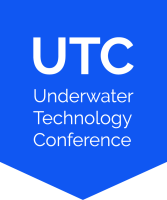Several heating solutions are already field proven, they are based on distributed heating technologies like DEH and Heat tracing and are mainly considered
for hydrate management under transient operations such as start-up, shutdown and preservation. Local heating is a different solution, intended to be
used continuously during production. Heating the flowlines during production is a way to overcome thermal constraints, mitigate hydrate and wax risks,
provide operating flexibility and optimize Capex. Indeed in the case of long distance tie-backs, very deepwater applications or when the fluid temperature
at the wellhead is too low, conventional flow assurance solutions might be very expensive or even not applicable.
A local heating device can be integrated into a subsea station, installed inline or in parallel of the main flowline and which can be retrieved for maintenance
or be relocated. The technology is compact thanks to the use of induction which allows for the transfer of a high power (several MW) over a relatively
short pipe length. The technology can be implemented either on new fields or on the extension of existing lines, is fully compatible with preservation by
flushing and allows for pigging in case of deposits. This paper will present an overview of the local heating technology including a preliminary design and
will then provide information on the small-scale prototype tests (100 kW heating) that have been performed and have confirmed heating levels and heating
efficiency.

